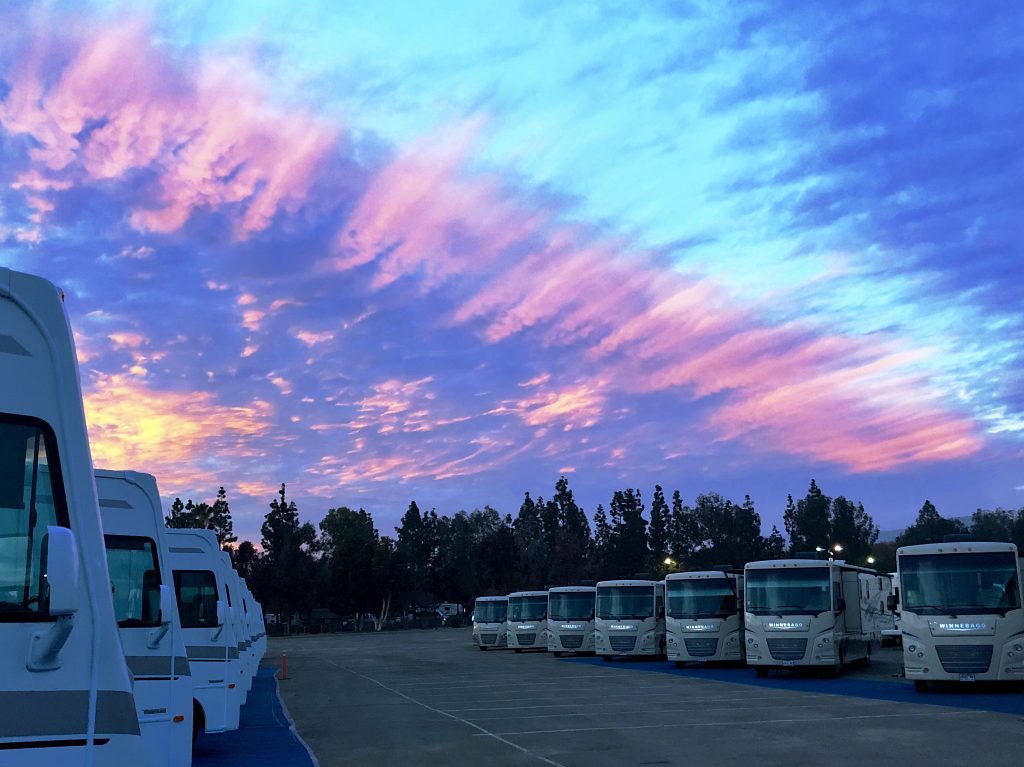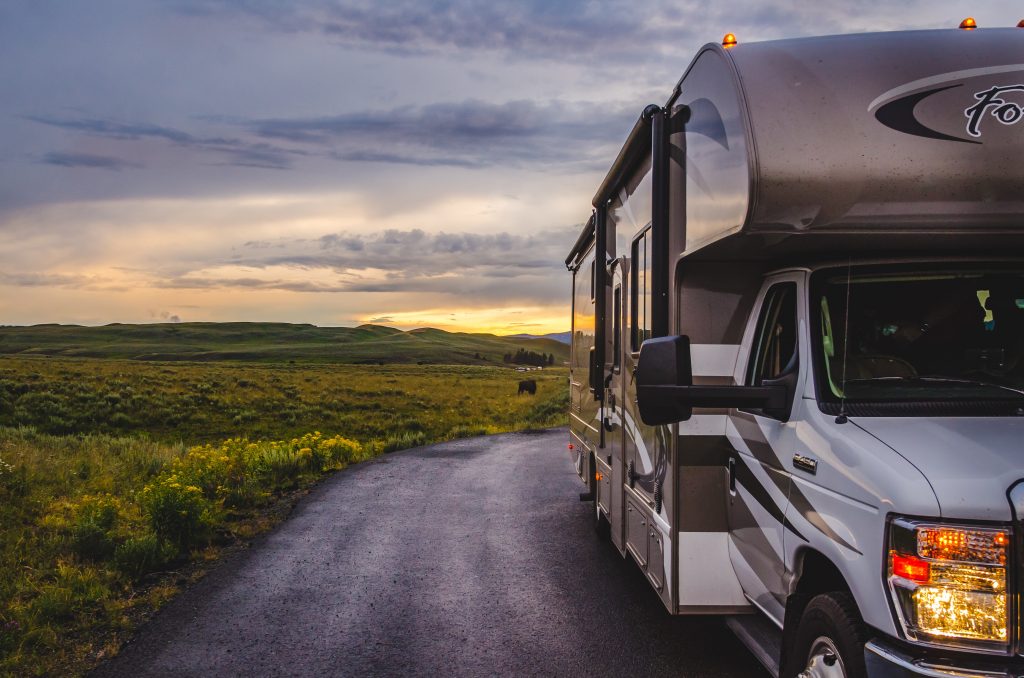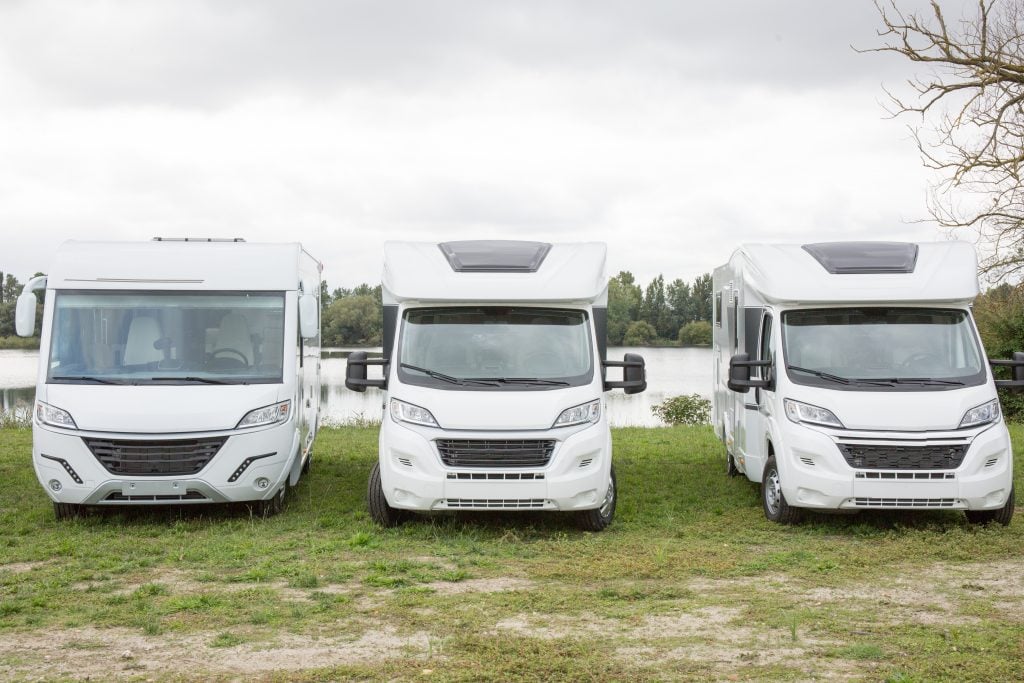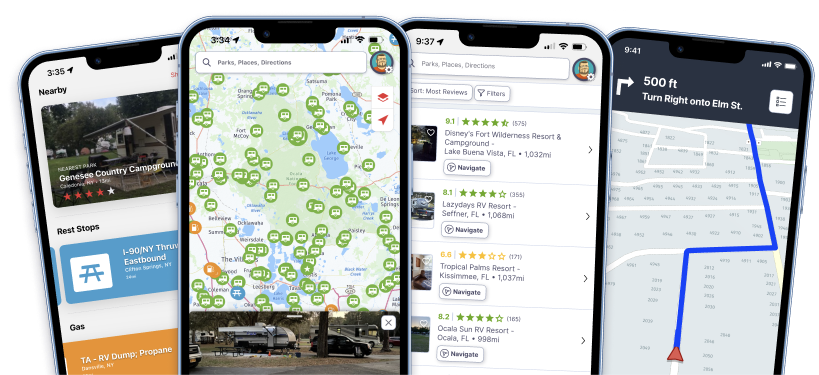What Is A Motorhome?
If you’re new to RVing, you might be wondering what a motorhome is. Is it an RV? Well, yes, it’s a a type of RV. Basically, there are two main types of RVs: towables (think travel trailers, fifth wheels, and popup campers) and motorhomes. Motorhome RVs are a great choice and there are many options.
However, if your idea of a campsite is one where you leave your trailer in the campground and drive a truck to attractions nearby, then a travel trailer may be in your future. But if you like the idea of an all-in-one vehicle, where you have your home and auto in one nice bundle, a motorhome RV could be your ticket to freedom!
Motorhome RVs are drivable recreational vehicles, empowering a camper with an engine. There is no need to get out of your camper and enter a car or truck to “tow” a trailer to a campsite. Just move to the cockpit of the motorhome and take a seat in the captain’s chair. Think of it as an earthly version of the Spaceship Enterprise. Like Captain Kirk, you will never have to tow the ship to its next location. But unlike Star Trek, there is no teleporting in a motorhome, at least at this time!
Types of Motorhome RVs
Class A Motorhome RV
These large “bus” type motorhome RVs usually offer the most space, both in living and in storage areas. Class A motorhomes are built on a bus chassis, with a higher profile that creates a “basement” area (hence, more storage space!). The cockpit is more spacious than other motorized RVs, with large captain’s chairs.
Many of these vehicles have enough room to offer more sleep space and a 2nd bath, making them a great choice for family travels. Because they have a basement space, the tanks and plumbing are most likely insulated. The furnace ductwork runs through the same area, so heating the coach also keeps the plumbing warm. This sets a Class A motorhome RV up as the perfect 4 season recreational vehicle. They range in sleep space from 2 to 8 people and model lengths can run from 24’ to 42’. Price range for a Class As can be anywhere from $75,000 to over $1,000,000 depending upon features and amenities.

Class B Motorhome RV
Class B motorhomes are also called camper vans. They are much smaller in size than Class A motorhomes, so you won’t find the kind of amenities common in Class A or Class C motorhomes. Class B’s are usually designed on a van or cutaway chassis. Newer vans have higher profiles, with exterior height around 10’. Most have wet baths, meaning a shower is located in the same space as the toilet and sink. In other words, everything in the bathroom gets wet when you take a shower, but not every Class B motorhome is equipped with a bathroom.
Class B vans are built with either a diesel engine or an unleaded fuel engine and can usually sleep 1 to 2 people. Although some have adaptable mattresses that fit over front seats to provide beds for children, as well. Storage space is extremely limited in the van, and models range in length from 17’ to 24’ long. The price range runs from $75,000 to $150,000 and beyond. These very popular RVs get better gas mileage and are much easier to maneuver in tight spots than the larger motorhome RVs.
Class B+ Motorhome RV
Although this term has been used interchangeably with some Class C RVs, a Class B+ usually refers to a camper van with a slide. They are also built on a van chassis, with expandable living space made possible by a slide. Some models utilize the slide as a Murphy bed feature, or with a sofa sleeper or theater seating. But keep in mind all have the same utilities as other RVs.
Due to the additional space, many Class B+s have more room available for a rear bathroom that is more spacious than regular Class B baths. Engines can be either diesel or gas, and interior storage space is helped a bit by the slide feature, but exterior storage is very limited. Sleeping space is for 1 or 2 people. Ranging in length from 20’ to 26’, a Class B+ can cost from $80,000 to $170,000. Because it is still relatively short, this RV is more maneuverable than a Class A or C.
Class C Motorhome RV
Immediately recognizable by its “bed over the cab” appearance, the Class C is built on a truck chassis. It’s a little shorter in vertical profile than a Class A. This means there isn’t a basement, but unlike Class Bs, the Class C usually has some outside storage space, along with more inside living space.
Many Cs have dry baths, with a separate shower area. And because they range in length from 21’ to 32’, this motorhome RV can sleep from 2 to 6 comfortably, depending upon the model. Some have queen or even king-sized beds and may include bunks for family travel. Appliances are generally larger than what you would find in a van, with full-size refrigerators, stoves and ovens. Prices range from $50,000 to $100,000 and engines can be diesel or gasoline.

Super C Motorhome RV
You will know a Super C as soon as you see it. Powered by a semi diesel, there is no camouflaging this motorhome RV. Everything is supersized! In fact, many of these RVs come with 3 air conditioners standard and a 12.5 kilowatt diesel generator to power them. The Super C is made to haul up to 20,000 lbs and looks like a semi truck. An RV chassis that forms the coach.
Mainly known for luxurious interiors, the Super C has high-end finishes with a spacious cockpit and living area. Like the Class C and A RVs, this unit can integrate slides for more indoor space, sleeping 2 to 6 very comfortably. Additionally, their lengths can vary from 32’ to 54’. Prices start around $150,000 and can move upwards of half a million dollars.
The Pros of Motorhome RVs
Many RVers would much rather drive their rig than tow their living space behind them. For that reason, motorhome RVs are the first choice of many. Their maneuverability in traffic areas is sometimes much easier (depending upon their length). Lastly, many solo travelers like the safety feature of being able to get in the driver’s seat without going outside their RV to leave in an emergency.

The Cons of Motorhome RVs
The biggest drawback to driving a motorhome RV is the need to leave a campsite. Many RVers have found a way around this by bringing along a “toad” or dinghy vehicle that is towed behind their motorhome. In other words, they don’t have to move their motorhome every time they make a trip. Instead, the dinghy, which is small and more maneuverable, is utilized.
But bringing a dinghy along requires extra effort. First, you need to make sure your dinghy vehicle can be flat towed. Just check the owner’s manual for “flat towing,” “dinghy towing,” or “recreational towing” to see if your vehicle is recommended for towing behind a motorhome. Then, you need to make sure your motorhome has the correct towing capacity. If your vehicle is approved for flat towing, you’ll need to properly equip it and your motorhome before dinghy towing. A second option is using a “dolly,” which places the front wheels of the dinghy on a little half-trailer, therefore disengaging the drive wheels (on a front-wheel-drive car). And a third option for cars that have four-wheel-drive is to place them on a “car hauler,” or trailer. For this setup to work safely and properly, the RV should be outfitted with a brake controller and wiring harness for the trailer lights, as well.
Also, if the motorized RV is rather long in length, you may have problems finding into suitably sized campsites. Many campgrounds have back-in sites only. In other words, learning the finer points of backing a large rig into those spaces is a must.
Pick Your RV Based on Camping Style
There are many benefits to owning a motorhome RV, as opposed to a travel trailer. But your choice of RVs must be predicated on your camping style. If you tend to “slow camp,” where you park a camper for several weeks or months at a time, a trailer may be a good decision. However, if you enjoy being on the move more frequently, a drivable RV will definitely get you where you are going!
Motorhome RV Orientation
If you’re ready to dive into the motorhome lifestyle, you’ll want to ensure you’re fully prepared. We can’t recommend the Motorhome RV Orientation Course RV Education 101 enough!
After watching the complete Motorhome set of videos by RV expert Mark Polk, you will master your own RV experiences. The Video Training Course included in the bundle set are:
- Motorhome Orientation Video Training Course
- Drive Your Motorhome Like a Pro Video Course
- RV Essential Items Video Course
- Winterizing & Storing your RV Video Course
- RV Care & Preventive Maintenance Video Course
This course is very thorough and has received rave reviews from RVers all over the United States. If you’re ready to learn more and take your RVing skills to the next level, then click here.

Leave a Reply